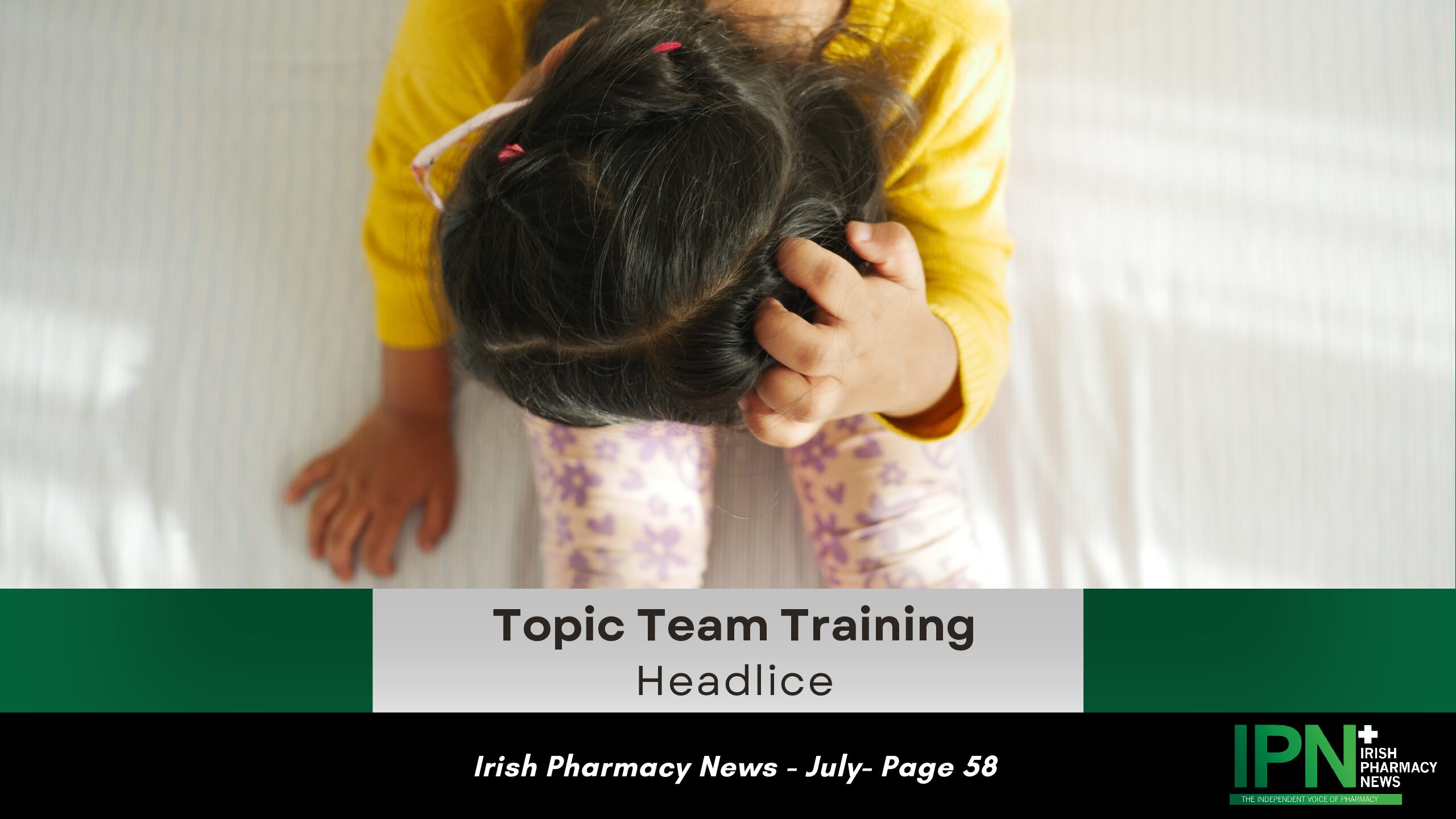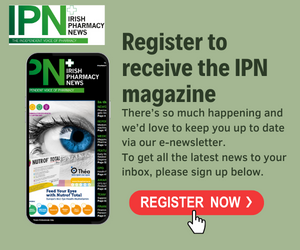The below information, considerations and checklist provides support to enable you to run a team training session and identify opportunities for learning within the topic of Head Lice.
A community pharmacy environment that fosters teamwork ensured high levels of consumer satisfaction. This series of articles is designed for you to use as guide to assist your team in focusing on meeting ongoing CPD targets and to identify any training needs in order to keep the knowledge and skills of you and your team up to date.
Head lice are grey or brown insects that live close to the scalp on human heads. They are 1mm to 3mm long. They can be white, yellow or brown.
The main symptom is itching, but only about 1 in 3 children with head lice have an itch. It is estimated that 1 in 10 children suffer from head lice at any one time, with 80% of head lice infestations occurring in children between the ages of four and 16. According to the Irish Pharmacy Union (IPU) all children should be screened for head lice once a week when they return to school. Head lice are spread via direct contact with the hair from an infected person so they cannot hop or fly. Those at greatest risk have had head to head contact or comes close to an infected individual. Whilst uncommon, sharing clothing is also a risk such as hats, scarves, coats, combs, brushes, or towels used by an infected person. Lice cannot live more than 24 hours off the scalp, but there is a high probability of catching an infection.
Head lice mostly proliferate in the school and educational activity settings, due to the greater number of children concentrated in each classroom or playground and the longer contact time. Head lice can become a cause of bullying or harassment in school, since the population erroneously associates this condition with a hygiene problem or social class. It is generally agreed that in children head lice are not related to hygiene, however it might be in adults.
Adults and children who do not attend a school setting may also be infected in other situations, especially throughout the global family. In general, it can be stated that the household – understood as the group of people that constitute a family group – is the maintenance of the disease and the school is the propagation medium.
Clinically, head lice can be asymptomatic. The pruritus is the most common symptom. Furthermore, this can sometimes prove to be so intense that, when scratched, it causes erosions in the skin and subsequent bacterial infections. In this situation, the scalp is suffering and in need of treatment. Fundamentally, the control of the pediculosis is the healing of each infected individual that is part of the affected social group, through the total elimination of all living phases of lice. This is achieved by treating individually using chemical pediculicides or other extraction and disposal techniques.
Pediculosis is a widespread social problem in all human populations. Although at family level it is often a reason for anguish, your assessment should not be alarmist about the consequences and meaning of the illness.
However, the eradication or elimination of local outbreaks and therefore of possible epidemics, requires measures that are more complex. The health and care information as to how to do this is freely made available through the education and awareness of schoolchildren, parents and educators. A child infected with lice scratches their head and when parents start getting alerts from the school informing them that it has been diagnosed, some of their classmates often panic. This can causes tremendous disruption within the household as parents must, every night, check everyone’s hair including their own, meticulously combing and treating. This can take up to 2-3 hours per night.
In addition, those within the household who also suffer from other conditions may find it additionally stressful. Parents must take the risk that once their child’s headlice has cleared up, there is a high risk of re-infection once they return to school and so in this regard, head lice are a common, repetitive cause for concern.
Currently, there are many products, such as shampoos, lotions and creams, designed specifically to combat lice. However, it must be borne in mind that they are products with an insecticidal action and they must be used scrupulously following the instructions on the package insert for them to be effective. If the lice still resist treatment, it is possible to resort to oral treatments.
At the end of any treatment, it will be necessary to remove the remaining nits with a fine-toothed comb and maintain the use of the antiparasitic shampoo or lotion for some time. For children under two years of age, this type of product should not be used and it is best to remove nits and lice by hand, combing through wet hair with a fine-toothed pin. It will be necessary to repeat the operation, with intervals of two or three days, for at least for two weeks after having seen the last louse.
On Topic of Head Lice – Consider:
- Can I explain the life cycle of head lice to my pharmacy team and how they can apply this knowledge to treatment?
– Can I/my team explain to a parent how to detect head lice? Can we teach the technique of detection combing?
– Can I do more to liaise with school nurses, head teachers, local general practices, health visitors and infection control nurses to ensure we are all giving the same information to patients and we can refer to one another as appropriate?
– Can I explain the correct use of head lice preparations?
– Do I know what to recommend if a customer returns saying the treatment has not worked?
Key Points on Headlice:
Check your pharmacy team are aware and understand the following key points:
Misconceptions around head lice – how they spread and how to treat them
How to check for the presence of live head lice; the importance and technique of detection combing
Scalp itching is not always caused by head lice; the itch develops if the person is allergic to lice
When to recommend an appropriate treatment and how to use it
The role of preventive products such as repellents
On Topic of Head Lice – Actions:
Include POS with associated condition treatments such as other areas associated with school and going back to school
Ensure efficient sign posting to further help and advice or reputable sources for head lice treatment
Ensure there is a discreet area in which staff can assist with advice and product selection
Keep products merchandised together, along with related products to help build sales
Ensure the team are able to communicate lifestyle advice on treating head lice
Train the team to meet all the above considerations
Read July IPN
Read our Latest Features










